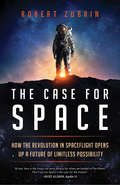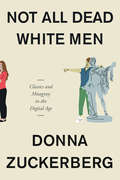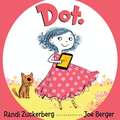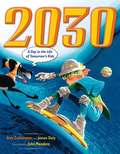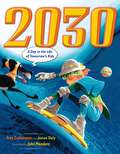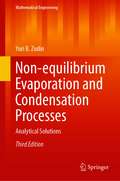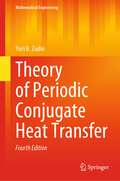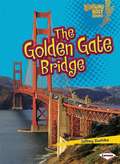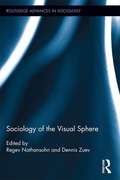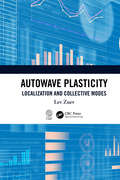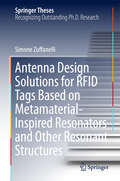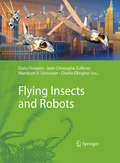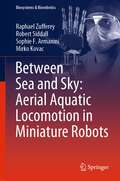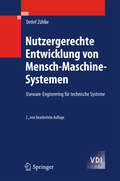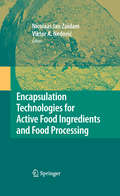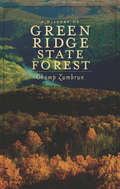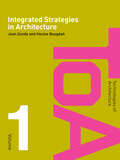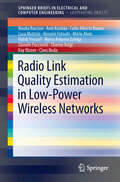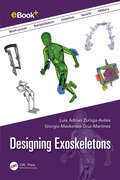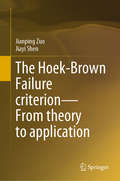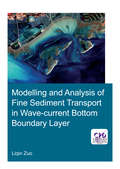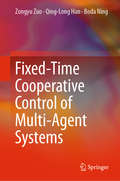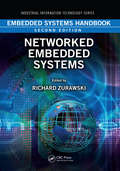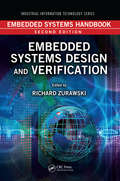- Table View
- List View
The Case for Space: How the Revolution in Spaceflight Opens Up a Future of Limitless Possibility
by Robert ZubrinA noted space expert explains the current revolution in spaceflight, where it leads, and why we need it.A new space race has begun. But the rivals in this case are not superpowers but competing entrepreneurs. These daring pioneers are creating a revolution in spaceflight that promises to transform the near future. Astronautical engineer Robert Zubrin spells out the potential of these new developments in an engrossing narrative that is visionary yet grounded by a deep understanding of the practical challenges.Fueled by the combined expertise of the old aerospace industry and the talents of Silicon Valley entrepreneurs, spaceflight is becoming cheaper. The new generation of space explorers has already achieved a major breakthrough by creating reusable rockets. Zubrin foresees more rapid innovation, including global travel from any point on Earth to another in an hour or less; orbital hotels; moon bases with incredible space observatories; human settlements on Mars, the asteroids, and the moons of the outer planets; and then, breaking all limits, pushing onward to the stars.Zubrin shows how projects that sound like science fiction can actually become reality. But beyond the how, he makes an even more compelling case for why we need to do this--to increase our knowledge of the universe, to make unforeseen discoveries on new frontiers, to harness the natural resources of other planets, to safeguard Earth from stray asteroids, to ensure the future of humanity by expanding beyond its home base, and to protect us from being catastrophically set against each other by the false belief that there isn't enough for all.
Not All Dead White Men: Classics and Misogyny in the Digital Age
by Donna ZuckerbergSome of the most controversial and consequential debates about the legacy of the ancients are raging not in universities but online, where alt-right men’s groups deploy ancient sources to justify misogyny and a return of antifeminist masculinity. Donna Zuckerberg dives deep to take a look at this unexpected reanimation of the Classical tradition.
Dot.
by Randi Zuckerberg*NOW A HIT TV SERIES*Meet Dot in this debut picture book by CEO and founder of Zuckerberg Media, editor-in-chief of Dot Complicated, and former Marketing Director of Facebook, Randi Zuckerberg! Dot's a spunky little girl well versed in electronic devices—she’s a technophile. She knows how to tap . . . to swipe . . . to share . . . and she pays little attention to anything else.Dot's tech-savvy expertise, mingled with her resourceful imagination, proves Dot knows lots and lots.But will she be able to unplug for one second to tap…swipe…and share with her real-life friends? Find out in this wonderful story about the day when Dot sets off on an interactive adventure with the world surrounding her.
2030: A Day In The Life Of Tomorrow's Kids
by Amy Zuckerman James DalyGlobal events and new technology change how we live from moment to moment. So, what will our world be like in twenty years? Come take a look as futurists Amy Zuckerman and James Daly examine what a kid?s daily life might be like in the year 2030. Inspired and informed by trends and scientifi c and technological research, 2030 is not only a peek at some cool future gadgets (talking dog collars, cars that drive themselves), but also a thoughtful examination of how our lives might be impacted as we adjust to environmental change.
2030: A Day in the Life of Tomorrow's Kids
by Amy Zuckerman James DalyWinner of the 2012 Grand Canyon Reader Award for a Non-fiction bookGlobal events and new technology change how we live from moment to moment. So, what will our world be like in twenty years? Come take a look as futurists Amy Zuckerman and James Daly examine what a kid?s daily life might be like in the year 2030. Inspired and informed by trends and scientifi c and technological research, 2030 is not only a peek at some cool future gadgets (talking dog collars, cars that drive themselves), but also a thoughtful examination of how our lives might be impacted as we adjust to environmental change.
Non-equilibrium Evaporation and Condensation Processes: Analytical Solutions (Mathematical Engineering)
by Yuri B. ZudinThis present book is concerned with analytical approaches to statement and solution of problems of non-equilibrium evaporation and condensation. From analytical solutions, one is capable to understand and represent in a transparent form the principal laws, especially in the study of a new phenomenon or a process. This is why analytical methods are always employed on the first stage of mathematical modeling. Analytical solutions are also used as test models for validation of results numerical solutions. Non-equilibrium evaporation and condensation processes play an important role in a number of fundamental and applied problems: laser methods for processing of materials, depressurization of the protection cover of nuclear propulsion units, solar radiation on a comet surface, explosive boiling of superheated liquid, thermodynamic principles of superfluid helium. Analytical relations provide an adequate description of the essence of a physical phenomenon.
Theory of Periodic Conjugate Heat Transfer (Mathematical Engineering)
by Yuri B. ZudinAn original method of investigation of the conjugate conductive-convective problem of periodic heat transfer is developed. The novelty of the approach is that a particular conjugate problem is replaced by a general boundary-value problem for the heat conduction equation in the solid. Within the framework of the hyperbolic model of thermal conductivity, the effect of self-reinforcement of the degree of conjugation by increasing the period of oscillations is found. The processes of hydrodynamics and heat exchange with periodic internal structure are considered: periodic model of turbulent heat transfer, hydrodynamic instability, bubbles dynamics in liquid, and model of evaporating meniscus. The book is intended as a source and reference work for researchers and graduate students interested in the field of conjugate heat transfer.
The Golden Gate Bridge
by Jeffrey ZuehlkeBefore the Golden Gate Bridge was built, people in San Francisco took a ferry across the water to get to Marin County. Now they drive across. How long is the bridge? and how did workers build it?
Sociology of the Visual Sphere (Routledge Advances in Sociology #91)
by Dennis Zuev Regev NathansohnThis collection of original articles deals with two intertwined general questions: what is the visual sphere, and what are the means by which we can study it sociologically? These questions serve as the logic for dividing the book into two sections, the first ("Visualizing the Social, Sociologizing the Visual") focuses on the meanings of the visual sphere, and the second ("New Methodologies for Sociological Investigations of the Visual") explores various sociological research methods to getting a better understanding of the visual sphere. We approach the visual sphere sociologically because we regard it as one of the layers of the social world. It is where humans produce, use, and engage with the visual in their creation and interpretation of meanings. Under the two large inquiries into the "what" and the "how" of the sociology of the visual sphere, a subset of more focused questions is being posed: what social processes and hierarchies make up the visual sphere? How various domains of visual politics and visuality are being related (or being presented as such)? What are the relations between sites and sights in the visual research? What techniques help visual researcher to increase sensorial awareness of the research site? How do imaginaries of competing political agents interact in different global contexts and create unique, locally-specific visual spheres? What constitutes competing interpretations of visual signs? The dwelling on these questions brings here eleven scholars from eight countries to share their research experience from variety of contexts and sites, utilizing a range of sociological theories, from semiotics to post-structuralism.
Autowave Plasticity: Localization and Collective Modes
by Lev ZuevAutowave Plasticity: Localization and Collective Modes discusses the nature of plastic flow in solids associated with the development of a localized plastic flow. Written by an authority in the field, the author demonstrates how patterns of localized plastic flow are associated with autowave modes that are generated in a deformable sample and delivers a complete work on the subject. Key Features An original work on the nature of plastic flows in solids, particularly metals and crystals Focuses on plastic flow as an autowave process Contains elements of theories, experimental considerations, and numerical modeling This reference will help readers with creating experimental methods to observe or localize plastic flow and with the modeling of plastic flows. It is a valuable reference for graduate students and research specialists working in material science.
Antenna Design Solutions for RFID Tags Based on Metamaterial-Inspired Resonators and Other Resonant Structures (Springer Theses)
by Simone ZuffanelliThis book describes innovative design solutions for radio-frequency identification (RFID) tags and antennas. Focusing mainly on passive ultra-high-frequency (UHF)-RFID tag antennas, it examines novel approaches based on the use of metamaterial-inspired resonators and other resonant structures as radiating elements. It also offers an exhaustive analysis of the radiation properties of several metamaterial-inspired resonators such as the split ring resonator (SRR) and related structures. Further, it discusses in detail an innovative technology for the RFID tagging of optical discs, which has demonstrated a significant improvement over the state of the art and resulted in a patent. By covering the entire research cycle of theory, design/simulation and fabrication/evaluation of RFID tags and antennas, while also reporting on cutting-edge technologies, the book provides graduate students, researchers and practitioners alike with a comprehensive and timely overview of RFID systems, and a closer look at several radiating structures.
Flying Insects and Robots
by Jean-Christophe Zufferey Mandyam V. Srinivasan Dario Floreano Charlie EllingtonFlying insects are intelligent micromachines capable of exquisite maneuvers in unpredictable environments. Understanding these systems advances our knowledge of flight control, sensor suites, and unsteady aerodynamics, which is of crucial interest to engineers developing intelligent flying robots or micro air vehicles (MAVs). The insights we gain when synthesizing bioinspired systems can in turn benefit the fields of neurophysiology, ethology and zoology by providing real-life tests of the proposed models. This book was written by biologists and engineers leading the research in this crossdisciplinary field. It examines all aspects of the mechanics, technology and intelligence of insects and insectoids. After introductory-level overviews of flight control in insects, dedicated chapters focus on the development of autonomous flying systems using biological principles to sense their surroundings and autonomously navigate. A significant part of the book is dedicated to the mechanics and control of flapping wings both in insects and artificial systems. Finally hybrid locomotion, energy harvesting and manufacturing of small flying robots are covered. A particular feature of the book is the depth on realization topics such as control engineering, electronics, mechanics, optics, robotics and manufacturing. This book will be of interest to academic and industrial researchers engaged with theory and engineering in the domains of aerial robotics, artificial intelligence, and entomology.
Between Sea and Sky: Aerial Aquatic Locomotion in Miniature Robots (Biosystems & Biorobotics #29)
by Raphael Zufferey Robert Siddall Sophie F. Armanini Mirko KovacThis book reports on the state of the art in the field of aerial-aquatic locomotion, focusing on the main challenges concerning the translation of this important ability from nature to synthetic systems, and describing innovative engineering solutions that have been applied in practice by the authors at the Aerial Robotics Lab of Imperial College London. After a general introduction to aerial-aquatic locomotion in nature, and a summary of the most important engineering achievements, the book introduces readers to important physical and mathematical aspects of the multimodal locomotion problem. Besides the basic physics involved in aerial-aquatic locomotion, the role of different phenomena happening in fluids, or those due to structural mechanics effects or to power provision, are presented in depth, across a large dimension range, from millimeters to hundreds of meters. In turn, a practice-oriented discussion on the obstacles and opportunities of miniaturization, for both robots and animals is carried out. This is followed by applied engineering considerations, which describe relevant hardware considerations involved in propulsion, control, communication and fabrication. Different case studies are analyzed in detail, reporting on the latest research carried out by the authors, and covering topics such as propulsive aquatic escape, the challenging mechanics of water impact, and a hybrid sailing and flying aircraft. Offering extensive and timely information on the design, construction and operation of small-scale robots, and on multimodal locomotion, this book provides researchers, students and professionals with a comprehensive and timely reference guide to the topic of aerial-aquatic locomotion, and the relevant bioinspired approaches. It is also expected to inspire future research and foster a stronger multidisciplinary discussion in the field.
Nutzergerechte Entwicklung von Mensch-Maschine-Systemen
by Detlef ZühlkeDas Buch gibt Entwicklern einen Leitfaden zur nutzergerechten Gestaltung von Mensch-Maschine-Systemen an die Hand. Dabei werden die besonderen Gestaltungsprobleme von Useware-Systemen für internationale Märkte ebenso behandelt wie die Auswahl von Entwicklungstools, Normen und Richtlinien sowie grundlegende Gestaltungsregeln. Wichtige Neuerungen, etwa die modellbasierte Entwicklung von Benutzungsschnittstellen oder zukünftige Interaktionsformen, werden in der Neuauflage anhand von Gestaltungsbeispielen vorgestellt.
Encapsulation Technologies for Active Food Ingredients and Food Processing
by N. J. Zuidam Viktor NedovicConsumers prefer food products that are tasty, healthy, and convenient. Encapsulation is an important way to meet these demands by delivering food ingredients at the right time and right place. For example, encapsulates may allow flavor retention, mask bad tasting or bad smelling components, stabilize food ingredients, and increase their bioavailability. Encapsulation may also be used to immobilize cells or enzymes in the production of food materials or products, such as fermentation or metabolite production. This book provides a detailed overview of the encapsulation technologies available for use in food products, food processing, and food production. The book aims to inform those who work in academia or R&D about both the delivery of food compounds via encapsulation and food processing using immobilized cells or enzymes. The structure of the book is according to the use of encapsulates for a specific application. Emphasis is placed on strategy, since encapsulation technologies may change. Most chapters include application possibilities of the encapsulation technologies in specific food products or processes. The first part of the book reviews general technologies, food-grade materials, and characterization methods for encapsulates. The second part discusses encapsulates of active ingredients (e.g., aroma, fish oil, minerals, vitamins, peptides, proteins, probiotics) for specific food applications. The last part describes immobilization technologies of cells and enzymes for use within food fermentation processes (e.g., beer, wine, dairy, meat), and food production (e.g., sugar conversion, production of organic acids or amino acids, hydrolysis of triglycerides). Edited by two leading experts in the field, Encapsulation Technologies for Food Active Ingredients and Food Processing will be a valuable reference source for those working in the academia or food industry. The editors work in both industry or academia, and they have brought together in this book contributions from both fields.
Einführung in die Entwurfsautomatisierung für Quantencomputer
by Alwin Zulehner Robert WilleDieses Buch bietet dem Leser einen einfachen Einstieg in das Quantencomputing sowie in den Entwurf entsprechender Geräte. Die Autoren behandeln verschiedene Entwurfsaufgaben, die für das Quantencomputing wichtig sind, und stellen entsprechende Lösungen vor. Eine Besonderheit des Buches ist, dass diese Aufgaben und Lösungen explizit aus der Perspektive der Entwurfsautomatisierung diskutiert werden, d.h. unter Verwendung von cleveren Algorithmen und Datenstrukturen, die von der Entwurfsautomatisierungs-Community für konventionelle Logik (d.h. für elektronische Geräte und Systeme) entwickelt worden sind und nun für diese neue Technologie angewendet werden. Auf diese Weise können relevante Entwurfsaufgaben wesentlich effizienter als bisher durchgeführt werden, was zu Verbesserungen um mehrere Größenordnungen führt (in Bezug auf die Laufzeit und andere Entwurfsziele). Beschreibt den aktuellen Stand der Technik für den Entwurf von Quantenschaltungen, für deren Simulation und für deren Abbildung auf reale Hardware; Bietet eine erste umfassende Einführung in die Entwurfsautomatisierung für Quantencomputer, die sich mit praxisrelevanten Aufgabenstellungen befasst; Es richtet sich sowohl an die Quantencomputer-Gemeinschaft als auch an die Gemeinschaft der Entwurfsautomatisierung und zeigt, welche beeindruckenden Verbesserungen möglich sind, wenn man das Wissen beider Gemeinschaften kombiniert.
A History of Green Ridge State Forest
by Champ ZumbrunGreen Ridge State Forest is a haven of calm and natural beauty among the Appalachians of western Maryland. This land was once the frontier of the nation, and trailblazers such as Thomas Cresap and George Washington were among the first Europeans to discover its wonders: the swift Potomac, the flowering dogwood and pine in the mountain reaches and the nighttime calls of the bobcat and the barred owl. The vision and stewardship of people like forester Fred W. Besley preserved the forest for future generations of hikers, explorers and families. Join former forest manager Champ Zumbrun as he traverses hidden trails to tell the remarkable story of Green Ridge State Forest.
Integrated Strategies in Architecture (Technologies of Architecture)
by Joan Zunde Hocine BougdahThis key text presents students with a holistic view of the building design process, bridging the gap between the theory and practice of constructing and assembling buildings. Integrated Strategies in Architecture encourages and enables students to gain a sound understanding of the purpose of buildings, the specialisms that contribute and the available technology. Zunde and Bougdah thoroughly introduce and expose the concepts and technologies that underlie the design process, setting current design in context as part of an evolutionary process, exemplified through historic and contemporary models, and emphasizing the importance of applying a broad variety of technologies in the creation of successful buildings. Topics covered include: space planning, colour theory, communication, management, aesthetics, structures and environmental control. This essential text will greatly assist students of architecture and its technology, construction management and building surveying as well as practitioners as they strive to build better buildings.
Radio Link Quality Estimation in Low-Power Wireless Networks
by Marco Antonio Zuniga Carlo Alberto Boano Claro Noda Luca Mottola Habib Youssef Hossein Fotouhi Daniele Puccinelli Anis Koubâa Kay Römer Mário Alves Nouha Baccour Thiemo VoigtThis book provides a comprehensive survey on related work for radio link quality estimation, which covers the characteristics of low-power links, the fundamental concepts of link quality estimation in wireless sensor networks, a taxonomy of existing link quality estimators and their performance analysis. It then shows how link quality estimation can be used for designing protocols and mechanisms such as routing and hand-off. The final part is dedicated to radio interference estimation, generation and mitigation.
Designing Exoskeletons
by Luis Adrian Zuñiga-Aviles Giorgio Mackenzie Cruz-MartinezDesigning Exoskeletons focuses on developing exoskeletons, following the lifecycle of an exoskeleton from design to manufacture. It demonstrates how modern technologies can be used at every stage of the process, such as design methodologies, CAD/CAE/CAM software, rapid prototyping, test benches, materials, heat and surface treatments, and manufacturing processes. Several case studies are presented to provide detailed considerations on developing specific topics. Exoskeletons are designed to provide work-power, rehabilitation, and assistive training to sports and military applications. Beginning with a review of the history of exoskeletons from ancient to modern times, the book builds on this by mapping out recent innovations and state-of-the-art technologies that utilize advanced exoskeleton design. Presenting a comprehensive guide to computer design tools used by bioengineers, the book demonstrates the capabilities of modern software at all stages of the process, looking at computer-aided design, manufacturing, and engineering. It also details the materials used to create exoskeletons, notably steels, engineering polymers, composites, and emerging materials. Manufacturing processes, both conventional and unconventional are discussed—for example, casting, powder metallurgy, additive manufacturing, and heat and surface treatments. This book is essential reading for those in the field of exoskeletons, such as designers, workers in research and development, engineering and design students, and those interested in robotics applied to medical devices.
The Hoek-Brown Failure criterion—From theory to application
by Jianping Zuo Jiayi ShenThis book provides a comprehensive coverage of the theory and principle of the Hoek-Brown (HB) failure criterion, methods or guidelines for estimating the HB input parameters, and the methodology of application of the HB criterion in rock engineering projects. It aims to help researchers, engineers and research students who work in the area of rock mechanics and mining engineering. Academics can quickly obtain an overview of the state of the art of the theory and principle of the Hoek-Brown criterion by reading the book before they advance their researches on the topics related to rock failure criteria. Geotechnical engineers can select appropriate Hoek-Brown input parameters for the design and analysis of rock engineering projects with the help of the principles introduced in this book. Research students may use the book as a textbook to learn the principle of rock mechanics related to rock mass properties.
Modelling and Analysis of Fine Sediment Transport in Wave-Current Bottom Boundary Layer (IHE Delft PhD Thesis Series)
by Liqin ZuoThe evolution and utilization of estuarine and coastal regions are greatly restricted by sediment problems. This thesis aims to better understand fine sediment transport under combined action of waves and currents, especially in the wave-current bottom boundary layer (BBL). Field observations, experimental data analysis, theoretical analysis and numerical models are employed. Silt-dominated sediments are sensitive to flow dynamics and the suspended sediment concentration (SSC) increase rapidly under strong flow dynamics. This research unveils several fundamental aspects of silty sediment, i.e., the criterion of the incipient motion, the SSC profiles and their phase-averaged parameterization in wave-dominated conditions. An expression for sediment incipient motion is proposed for silt-sand sediment under combined wave and current conditions. A process based intra-wave 1DV model for flow-sediment dynamics near the bed is developed in combined wave-current conditions. The high concentration layer (HCL) was simulated and sensitivity analysis was carried out by the 1DV model on factors that impact the SSC in the HCL. Finally, based on the 1DV model, the formulations of the mean SSC profile of silt-sand sediments in wave conditions were proposed. The developed approaches are expected to be applied in engineering practice and further simulation.
Fixed-Time Cooperative Control of Multi-Agent Systems
by Zongyu Zuo Qing-Long Han Boda NingThis monograph presents new theories and methods for fixed-time cooperative control of multi-agent systems. Fundamental concepts of fixed-time stability and stabilization are introduced with insightful understanding. This book presents solutions for several problems of fixed-time cooperative control using systematic design methods. The book compares fixed-time cooperative control with asymptotic cooperative control, demonstrating how the former can achieve better closed-loop performance and disturbance rejection properties. It also discusses the differences from finite-time control, and shows how fixed-time cooperative control can produce the faster rate of convergence and provide an explicit estimate of the settling time independent of initial conditions. This monograph presents multiple applications of fixed-time control schemes, including to distributed optimization of multi-agent systems, making it useful to students, researchers and engineers alike.
Embedded Systems Handbook: Networked Embedded Systems
by Richard ZurawskiConsidered a standard industry resource, the Embedded Systems Handbook provided researchers and technicians with the authoritative information needed to launch a wealth of diverse applications, including those in automotive electronics, industrial automated systems, and building automation and control. Now a new resource is required to report on current developments and provide a technical reference for those looking to move the field forward yet again. Divided into two volumes to accommodate this growth, the Embedded Systems Handbook, Second Edition presents a comprehensive view on this area of computer engineering with a currently appropriate emphasis on developments in networking and applications. Those experts directly involved in the creation and evolution of the ideas and technologies presented offer tutorials, research surveys, and technology overviews that explore cutting-edge developments and deployments and identify potential trends. This second self-contained volume of the handbook, Network Embedded Systems, focuses on select application areas. It covers automotive field, industrial automation, building automation, and wireless sensor networks. This volume highlights implementations in fast-evolving areas which have not received proper coverage in other publications. Reflecting the unique functional requirements of different application areas, the contributors discuss inter-node communication aspects in the context of specific applications of networked embedded systems. Those looking for guidance on preliminary design of embedded systems should consult the first volume: Embedded Systems Design and Verification.
Embedded Systems Handbook: Embedded Systems Design and Verification
by Richard ZurawskiConsidered a standard industry resource, the Embedded Systems Handbook provided researchers and technicians with the authoritative information needed to launch a wealth of diverse applications, including those in automotive electronics, industrial automated systems, and building automation and control. Now a new resource is required to report on current developments and provide a technical reference for those looking to move the field forward yet again. Divided into two volumes to accommodate this growth, the Embedded Systems Handbook, Second Edition presents a comprehensive view on this area of computer engineering with a currently appropriate emphasis on developments in networking and applications. Those experts directly involved in the creation and evolution of the ideas and technologies presented offer tutorials, research surveys, and technology overviews that explore cutting-edge developments and deployments and identify potential trends. This first self-contained volume of the handbook, Embedded Systems Design and Verification, is divided into three sections. It begins with a brief introduction to embedded systems design and verification. It then provides a comprehensive overview of embedded processors and various aspects of system-on-chip and FPGA, as well as solutions to design challenges. The final section explores power-aware embedded computing, design issues specific to secure embedded systems, and web services for embedded devices. Those interested in taking their work with embedded systems to the network level should complete their study with the second volume: Network Embedded Systems.
